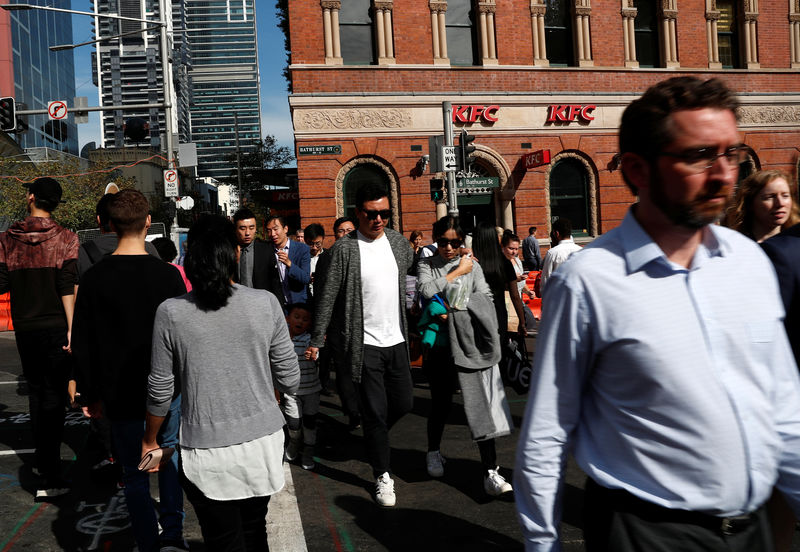(Bloomberg) -- Explore what’s moving the global economy in the new season of the Stephanomics podcast. Subscribe via Pocket Cast or iTunes.
Australia’s monetary policy easing has driven interest rates down to levels where they could be doing more harm than good for the economy.
The central bank could be bumping up against the “reversal interest rate,” a level at which accommodative policy begins to produce unintended consequences. The clearest sign of that is the slide in consumer sentiment since the Reserve Bank began lowering rates in June, particularly after the ensuing July and October cuts.
It’s against that backdrop that economists and money markets predict Governor Philip Lowe will pause Tuesday and keep the cash rate at 0.75%.
“Most people equate interest-rate cuts, particularly when you’re already at record-lows, as an indication that something is going wrong. They may not quite know what it is, but clearly there’s a message,” said Michael Blythe of Commonwealth Bank of Australia. “It makes the typical household more cautious. So you’re less inclined to spend, more inclined to save. So you’re not getting the positive impact that you’d hoped from the rate cuts.”
The RBA’s conundrum is that it has to keep pace when major counterparts such as the Federal Reserve ease policy, otherwise the Aussie dollar would jump and damage exporters. Lowe received some relief last week when Fed chief Jerome Powell signaled he’s on hold after cutting three times, the same as the RBA.
The currency was trading around 69 U.S. cents Monday, about a cent below its level in June when Lowe ended a three-year rate pause. His fellow board member Ian Harper returned fire at critics of the RBA’s renewed easing, pointing out that annual economic growth is 1.4% -- about half the speed limit -- and the jobless rate is at 5.2%, well above the estimate of full employment.
“We’re supposed to be achieving inflation, employment, economic prosperity for the welfare of the people of Australia,” Harper said at a conference in Melbourne Thursday.
“Would that be achieved if the bank went on strike and let the U.S. continue to lower interest rates and watch our exchange rate go back up through the 70s?” he asked. “Would that be looking after the economic prosperity and welfare of the people of Australia? You think about it. This economy is extremely sensitive to the exchange rate.”
Meantime, while the nation’s major banks have been passing on most of the RBA’s cuts to depositors, they haven’t been passing on as much to borrowers -- further blunting the impact of central bank policy.
For Blythe, who has access to reams of financial data as chief economist at the nation’s biggest lender, further evidence is found in the paucity of mortgage holders using the RBA’s cuts to lower their monthly repayments and free up cash. Rather than spending, he said, they’re opting to put the additional funds into debt repayments.
Another sign of the “negative confidence effect” is that government tax rebates to households are being banked or put into the mortgage, said Blythe.
Supporting that thesis, retail sales advanced a measly 0.2% in September, just half the estimate of economists, and volumes actually declined 0.1% in the third quarter. Indeed, retailers at present seem to be only keeping afloat on the back of high population growth.
One area where rate cuts are working is property, with prices in the major cities rising again after a two-year slowdown. In October, prices in Melbourne surged 2.3%, the biggest monthly gain in almost 10 years; indeed, since bottoming in May, they have climbed 6%. Sydney isn’t far behind, jumping 1.7% last month and rebounding 5.3% since May.
Given the urgency of encouraging consumer spending, households feeling a little wealthier from higher property prices is fine by Lowe.
“Lower interest rates do push up asset prices and higher asset prices are supposed to encourage more investment, and there’s a wealth effect and people spend a bit more,” he said in response to a question following a speech in Canberra last week. “So that is part of the transmission mechanism. Is it a problem? I don’t think so.”
(Updates with weak retail sales in 12th paragraph)
